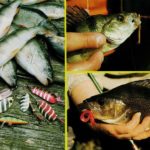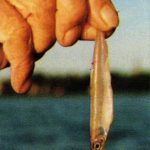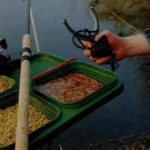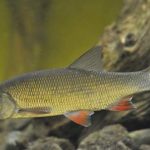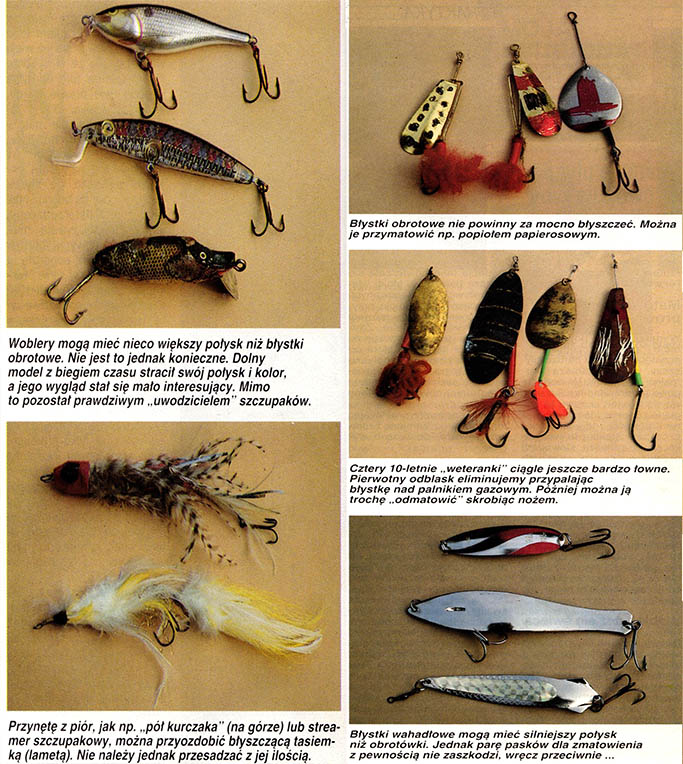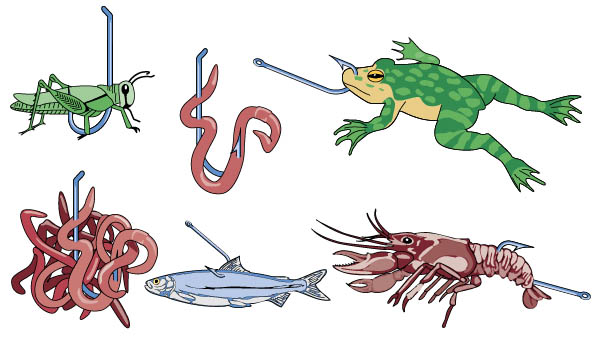 Nie wszystko można kupić, nie wszystko można dostać o każdej porze roku, dnia i nocy. Dotyczy to głównie naturalnej, żywej przynęty. Znawca przyrody szybko się zorientuje, gdzie i jaką przynętę można znaleźć. Wędkarz taki nie da się i wtedy zbić z tropu, gdy podczas urlopu zabrane ze sobą robaki powitają go nieświeżym zapachem.
Nie wszystko można kupić, nie wszystko można dostać o każdej porze roku, dnia i nocy. Dotyczy to głównie naturalnej, żywej przynęty. Znawca przyrody szybko się zorientuje, gdzie i jaką przynętę można znaleźć. Wędkarz taki nie da się i wtedy zbić z tropu, gdy podczas urlopu zabrane ze sobą robaki powitają go nieświeżym zapachem.
Z dużym powodzeniem na przykład łowiłem już używając jako przynęty koników polnych. Ustalenie miejsca ich bytności nie jest trudne. Wystarczy tylko dobrze nastawić uszy i już wiadomo, gdzie w „trawie piszczy”.
Im cieplejsza i ładniejsza pogoda, tym łatwiej można znaleźć te zwinne owady. W chłodne i deszczowe dni, chowają się tak, że wszelkie poszukiwania są bezowocne. Szczególnie „łowne” okazują się miejsca porośnięte gęstą trawą, która daje im dobre schronienie. O dużym szczęściu można mówić, jeżeli taka kolonia zamieszkuje w okolicy zbiornika wodnego. Wystarczy ją tylko zmusić do ucieczki w kierunku jeziora czy strumyka, a wpadające do wody koniki pozostaje nam już tylko pozbierać.
Odrębnym rozdziałem jest natomiast szukanie dżdżownic. Mógłbym długo opowiadać, jak często szukałem ich bez skutku i ile wysiłku takie przedsięwzięcia mnie kosztowały. Nie wszędzie można znaleźć kompost, obornik czy gnijące resztki roślinne, gwarantujące rosówkom czy dżdżownicom dogodne warunki do bytowania. Przy suchej pogodzie najprędzej znajdziemy je tam, gdzie humus pokryty jest twardą warstwą ziemi oraz pod udeptanymi ścieżkami między grządkami w ogrodzie. Pulchna ziemia ogrodowa, piasek czy żwir są miejscami mniej ciekawymi. Dżdżownice nie chowają się co prawda tak głęboko w ziemi jak rosówki, ale za to są mniej „wydajne” w połowach z racji ich dużej twardości. Może to być również zaletą, ale tylko w przypadkach, gdzie mamy podstawy sądzić, że drobnica obskubie nam przynętę z haczyka zanim większa ryba zdąży ją zauważyć. Dobre szanse znalezienia robaków mamy również w okolicach bagiennych, przy brzegach zbiorników wodnych, pod zmurszałymi deskami oraz pod kamieniami. Doskonałą przynętą na węgorze są tak zwane węgorzyce, które można znaleźć w bagnistych i torfiastych brzegach rzek.
Nocne łapanie rosówek z latarką jest również skuteczne. Zbliżając się do rosówek poruszamy się bardzo ostrożnie i uważamy, aby nasza przynęta nie dostała się bezpośrednio w promień latarki (powoduje to jej natychmiastową ucieczkę). Przy braku opadów należy teren naszych nocnych poszukiwań polać wodą. Dodatek mydlin lub formaliny do wody oraz polanie tym ziemi powoduje prawie natychmiastowe wychodzenie robaków na powierzchnię. Najskuteczniejsze jednak jest łapanie rosówek w nocy po naturalnych opadach atmosferycznych. Wypełzają one wtedy masowe ze swych norek na powierzchnię ziemi ponieważ ich „domostwo” zostało zalane wodą. Byłem również świadkiem skutecznego łapania rosówek przy użyciu prądu elektrycznego. Odradzam jednak stosowanie tej metody poszukiwań, zdarzały się bowiem przy tym wypadki śmiertelne. Natomiast żadnego niebezpieczeństwa nie ma podczas kopania robaków. Szpadel po wbiciu w ziemię i mocnym poruszeniu w obie strony przynosi także dobre rezultaty. Grudy ziemi rozbijamy na drobne kawałki. Wystarczy już wtedy tylko pozbierać robaki leżące u naszych stóp. Na terenach ubogich w robaki, zwłaszcza w górach, gdzie można bezskutecznie przekopać „całe góry”, ograniczam się do poszukiwań w rozkładających się „minach” krowich. Ich brzegi powinny być już trochę odsklepione od ziemi, a środek jasny i suchy. Często pomogło mi to w trudnej sytuacji, ponieważ w ich środku znajdowałem „żwawe” robaki, w miejscu styku „miny” z ziemią. Najbardziej znanym tu robakiem jest 3 cm larwa, tak zwany „czerwony robak”.
